Whenever quintessentially British cultural icons are mentioned, the words Aston Martin are rarely far behind. In this second instalment of our On Your Marques! series, we take a closer look at the enthralling Aston Martin history as the company commemorates 110 years of beautiful cars, bankruptcy and Bond.
Here at UDT, we’re celebrating a brand new Aston Martin in our fleet: the extraordinary Vantage F1 Roadster. What can we say… this car is a sublime mix of track-inspired performance and British elegance — be sure to read to the end for more of our initial impressions.
Now, let’s dive into the Aston Martin brand and its fascinating history.
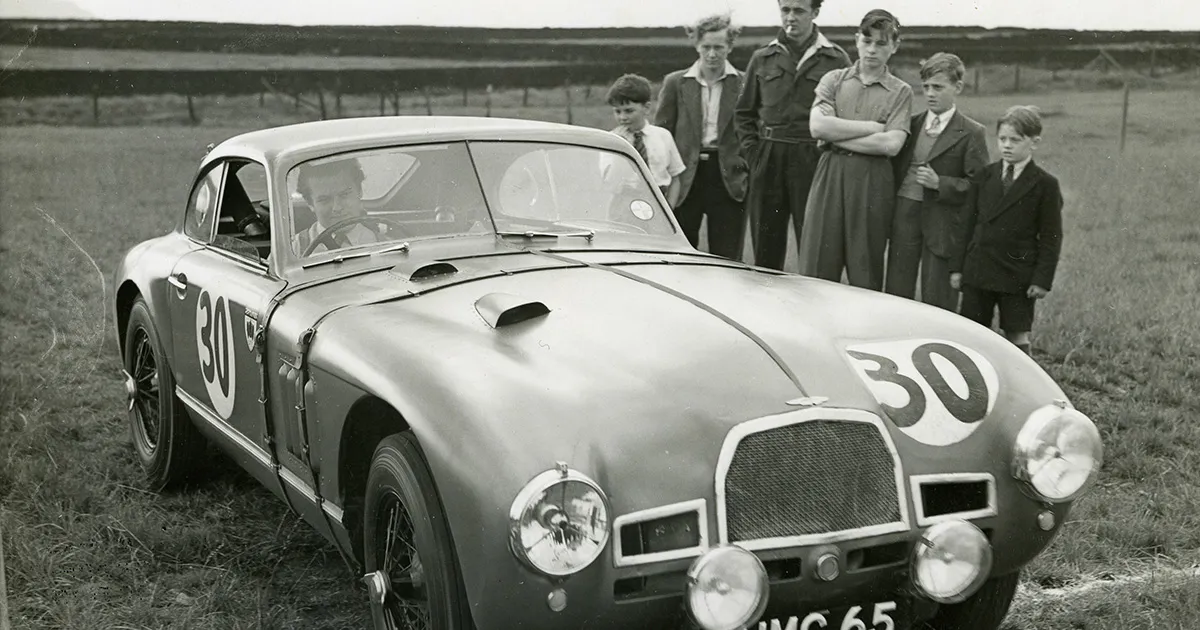
Image: astonmartin.blob.core.windows.net
A brief history of Aston Martin
The history of Aston Martin is a great British success story, peppered with plenty of turbulence along the way.
1913: The beginning
In 1913, English motoring enthusiasts Lionel Martin and Robert Bamford established a company in London called Bamford and Martin, selling racing cars made by Singer.
The first Bamford and Martin-designed car to bear the name ‘Aston Martin’ – named after Martin’s racing history at Aston Hill – was a 1908 Isotta-Fraschini chassis fitted with a four-cylinder engine. This debut design was known as the Coal Scuttle, and was the only car designed by the company before the First World War.
1920: The interwar period
After the interruption of war, Bamford and Martin moved to a new premises in Abingdon Road and began producing its own racing cars. This included the famous ‘Green Pea’, which went on to take part in the 1922 French Grand Prix.
In 1920, Robert Bamford retired from the company, which then suffered bankruptcy and changed hands several times, until 1926, when the Abingdon Road factory closed and Lionel Martin left the company. Bamford and Martin was acquired by multiple parties, moved to Feltham, and its name was changed to Aston Martin Motors.
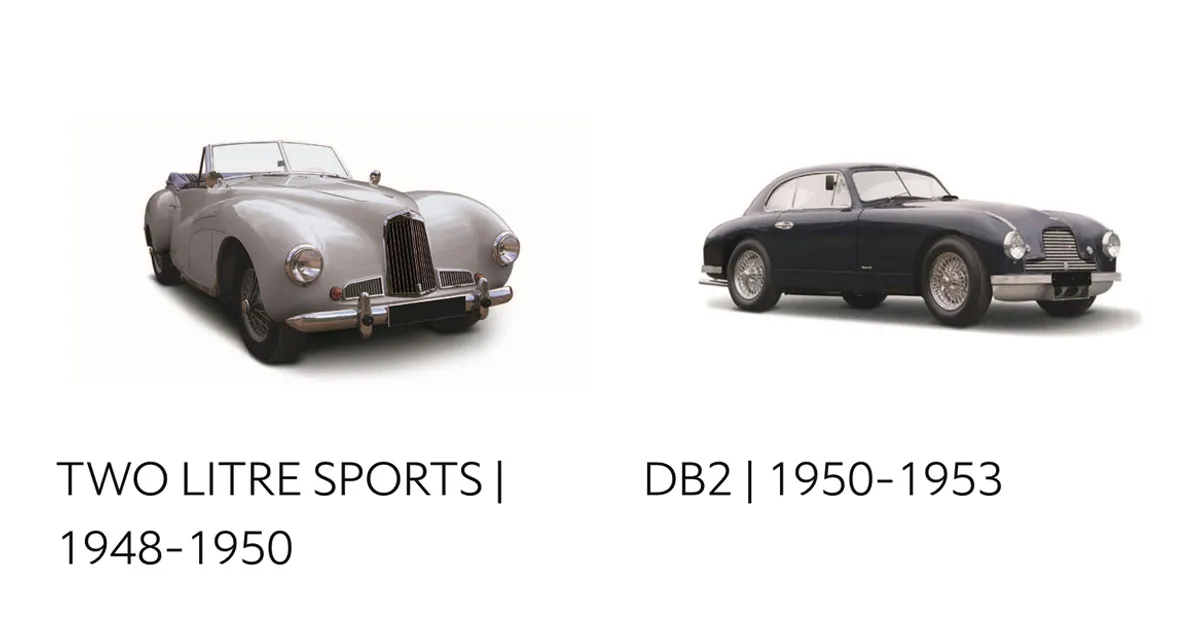
Image: astonmartin.com
1947: The DB years
After the Second World War, Aston Martin floundered until it was purchased for a reported £20,000 by the established gear and machine tools manufacturer David Brown Limited in 1947, which also acquired Lagonda around the same time.
By the following year, the fortunes of the company began to improve. Bearing the initials of David Brown, the DB2 was born in 1950 and the DB3 arrived in 1951, with 1948’s 2-Litre Sports retroactively dubbed the DB1. By 1955, production was moved to the town of Newport Pagnell ahead of the launch of the DB4 in 1958.
1964: The Goldfinger era
While the DB series completely revitalised Aston Martin, nothing would boost the brand as much as the 4-litre Aston Martin DB5 in 1964. It would soon become an icon after it was driven through the Swiss Alps by Sean Connery’s James Bond in the movie hit of the year, Goldfinger.
The DB5 was the pinnacle of Aston Martin’s golden era and was followed by the DB6 in 1965, then the 1967 DBS, which was produced until 1972. In that year, David Brown sold Aston Martin, which began a 15-year stretch of ownership changes.
1987: The Ford takeover
During the 1970s, Aston Martin once again found itself in turmoil – yet it wasn’t all doom and gloom, as the company released the brutal V8 Vantage in 1977, hailed as ‘Britain’s first supercar’. Fortunes once again turned in 1987, when a heavily depleted Aston Martin was taken over by Ford.
The American motoring giant pumped critical investment into the marque’s research, design and manufacturing facilities. This led to the opening of the first purpose-built Aston Martin factory in Gaydon in Warwickshire, and the development of the DB7 – a landmark model that would set the tone for a new look Aston Martin.
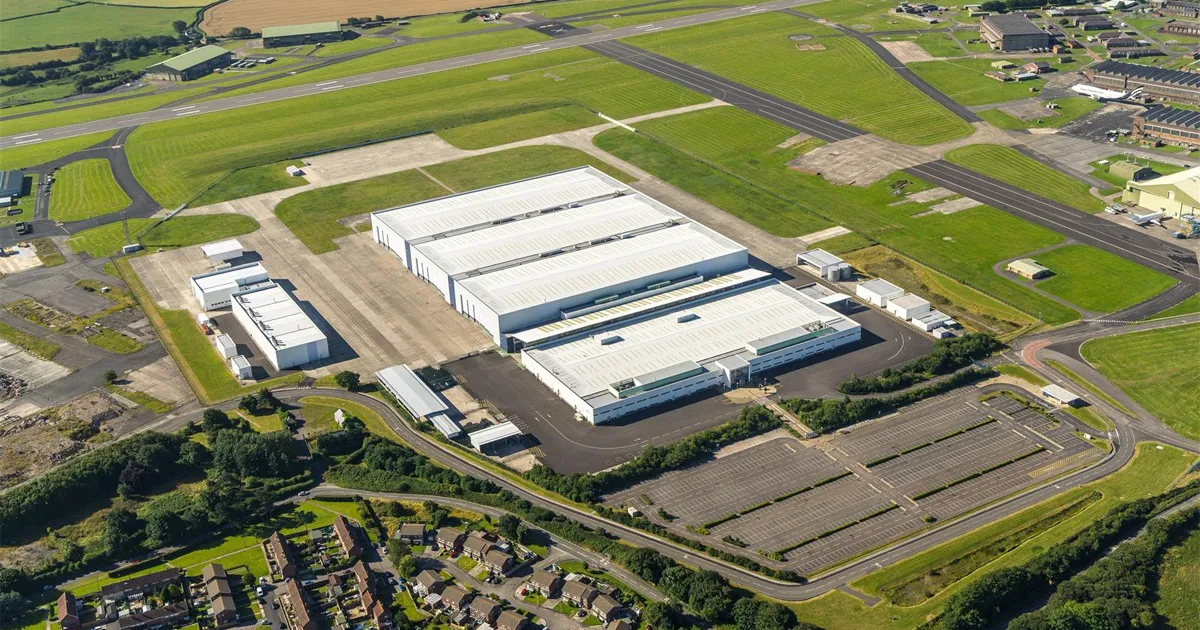
Image: astonmartinlagonda.com
2007: The new era
In 2007, Ford sold Aston Martin to a private consortium for £475 million, ushering in a new era as the marque approached its 100th anniversary. In its centenary year, Aston Martin signed a deal with Mercedes-Benz Group to supply the next generation of Aston Martin cars with Mercedes-AMG engines.
From 2015, Aston Martin began its venture as a luxury lifestyle brand, pairing with famous names such as Hackett London and TAG Heuer to produce limited-edition items. By 2019, Aston Martin had opened a new manufacturing facility at St Athan in Wales.
Who owns Aston Martin?
Aston Martin is currently owned by a consortium, with the largest shareholders being Canadian billionaire Lawrence Stroll, Saudi Arabia’s Public Investment Fund, and Chinese manufacturer Geely.
Over the past 110 years, the marque has been through a multitude of ownership changes since it was first established Lionel Martin and Robert Bamford. Some of the most notable owners include Renwick and Bertelli, David Brown, Sprague and Curtis, Victor Gauntlett, and the Ford Motor Company.
Where is Aston Martin from?
Aston Martin is from England, established in London in 1913, and all Aston Martin cars are still built in the United Kingdom to this day. The marque has factories in Gaydon (Warwickshire) and St Athan in South Wales. The old Newport Pagnell factory in Buckinghamshire is now a facility for Aston Martin’s classic car department, focusing on heritage sales and restorations.
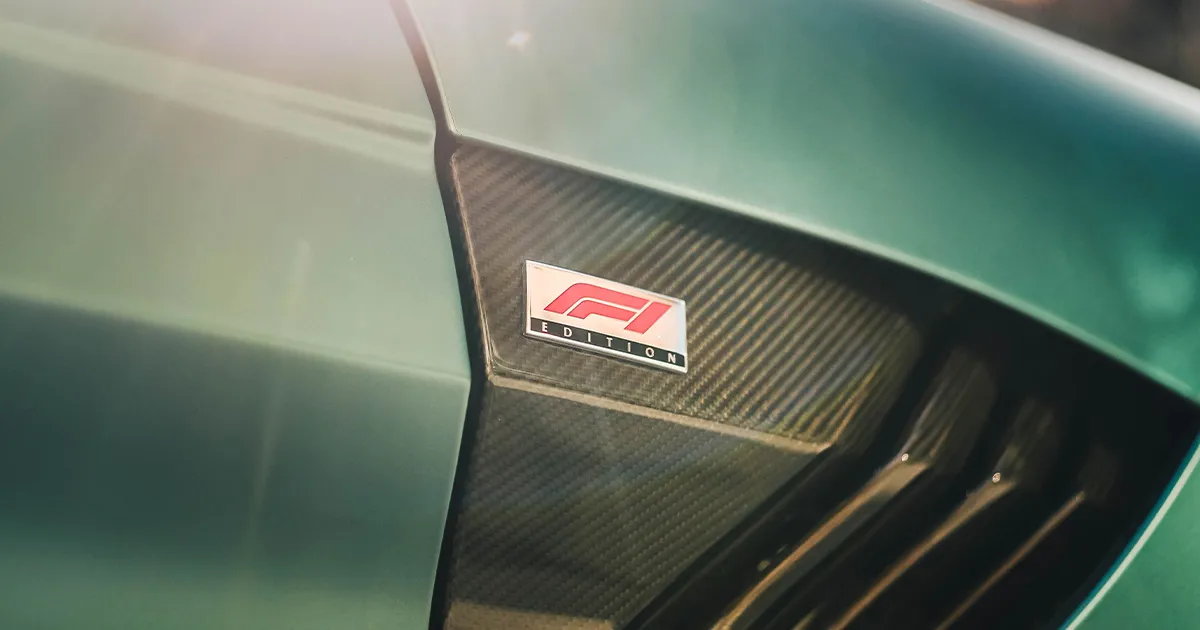
Image: Ultimate Driving Tours
What makes Aston Martin special?
From Rolls Royce to McLaren, the Brits have gifted the world many motoring icons, yet few have reached national treasure status like Aston Martin. While some can offer exuberant luxury and some eye-watering power, no other brand manages to combine the two as beautifully as Aston Martin.
The marque has also accrued a fantastic racing history over the past century. Aston Martin has been a familiar face at Le Mans 24 Hours and the Formula 1 World Championship for decades. It’s built a substantial global following of motoring enthusiasts who are eager to get their hands on the latest models — which isn’t always easy …
Because Aston Martin cars are produced in limited numbers, they have instant exclusivity. To illustrate this, in 2023, the magnificent new Aston Martin Valour sold out within two weeks of its unveiling – despite its hefty £1.3 million price tag.
Combine the marque’s racing prestige, the exclusivity, and its certified status as a British icon, it’s easy to see why Aston Martin is so beloved. Today, it flies the British flag on the international supercar stage, doing battle with continental heavyweights like Ferrari, Lamborghini and Porsche.
So, what kind of person drives an Aston Martin? Ultimately, the motorist that wants to enjoy a superior ride and be cosseted by a sense of luxury and exclusivity.
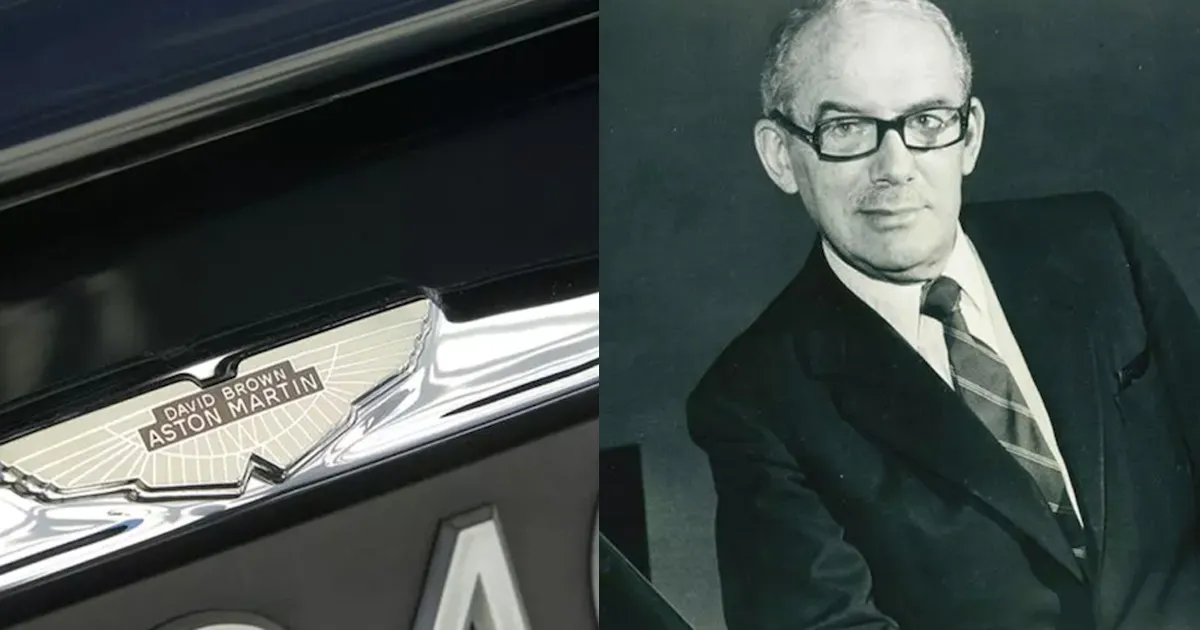
Image: astonmartinpalmbeach.com
What does ‘DB’ stand for with Aston Martin?
Aston Martin’s famous DB series has been around since 1950, when the DB2 was unveiled.
And if you’re wondering what ‘DB’ stands for, it’s simply the initials of David Brown, who took over Aston Martin in 1947, turning the company into a household name.
What is the fastest Aston Martin?
Revealed in 2017, the F1-inspired Valkyrie is the fastest Aston Martin that was road legal. This futuristic powerhouse sports a 6.5-litre hybrid V12 that can fling you from 0 to 62 mph in under 2.7 seconds, with an approximate top speed of 217 mph. Truly frightening.
A special mention too, for 2009’s One-77, with its top speed of just over 220 mph — although it won’t keep up with the Valkyrie from a standing start.
Our picks: the 5 best Aston Martin models
With so many legendary cars released over the past century, it’s difficult to settle on the best Aston Martin models – yet here are our favourites, selected for their design, performance and notability.
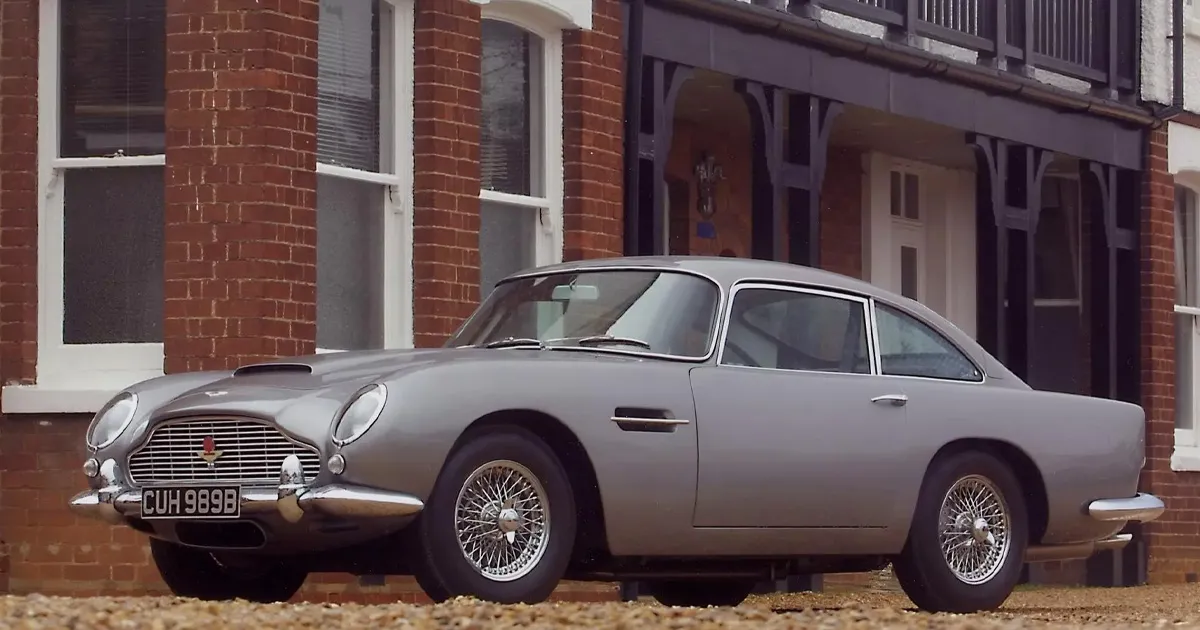
Image: astonmartin.com
DB5
Obvious? Indeed – but we have absolutely no qualms about kicking off with the DB5. Often called ‘the most famous car in the world’, the distinctive chassis exudes British gentlemanly elegance, while the 4-litre engine added more power and excitement over its DB4 predecessor. It didn’t come with rocket launchers a la James Bond’s custom model, yet those lucky enough to own one of the roughly 1,000 produced could enjoy a new five-speed gearbox and electric windows.
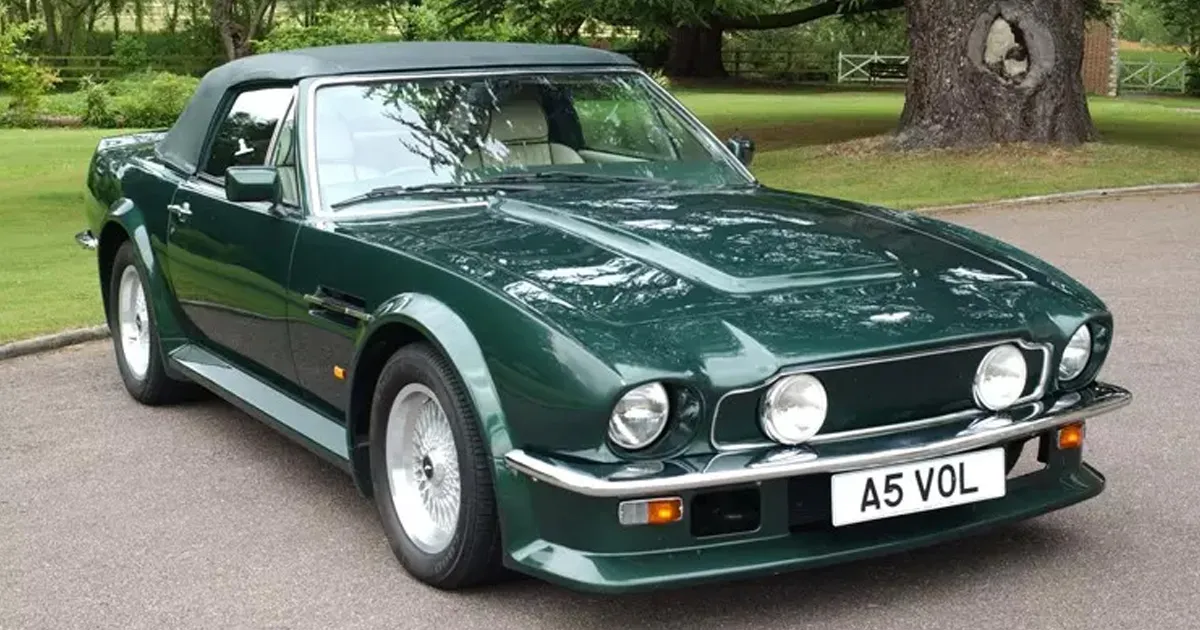
Image: astonmartin.com
Vantage V8
Announced in 1977, the Vantage V8 is widely agreed to be the first British supercar ever produced. With brawny styling inspired by American muscle cars, it was straightforward yet provided an exceptional drive. The 5.3-litre V8 engine produced 390 bhp, went from 0 to 60 mph in 5.2 seconds, and reached a top speed of 170 mph – at the time, the Vantage was the fastest four-seater in the world.
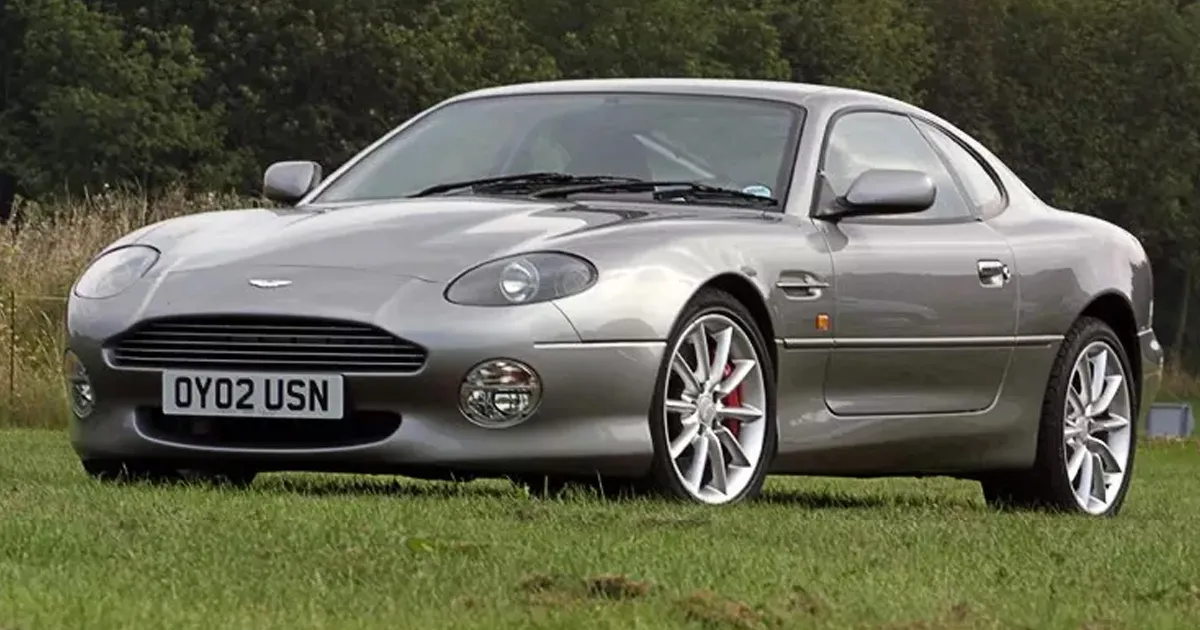
Image: astonmartin.com
DB7
As Aston Martin went through yet another turbulent period in the early 1990s, it was the DB7 that arrived to save the day. Despite being arguably more Jaguar than Aston Martin due to its then-sister company providing the engine and design, the DB7’s sleek lines were a refreshing departure from the boxy Virage and Vantage. It quickly became lauded as one of the best-looking cars of the entire decade and secured the company’s future.
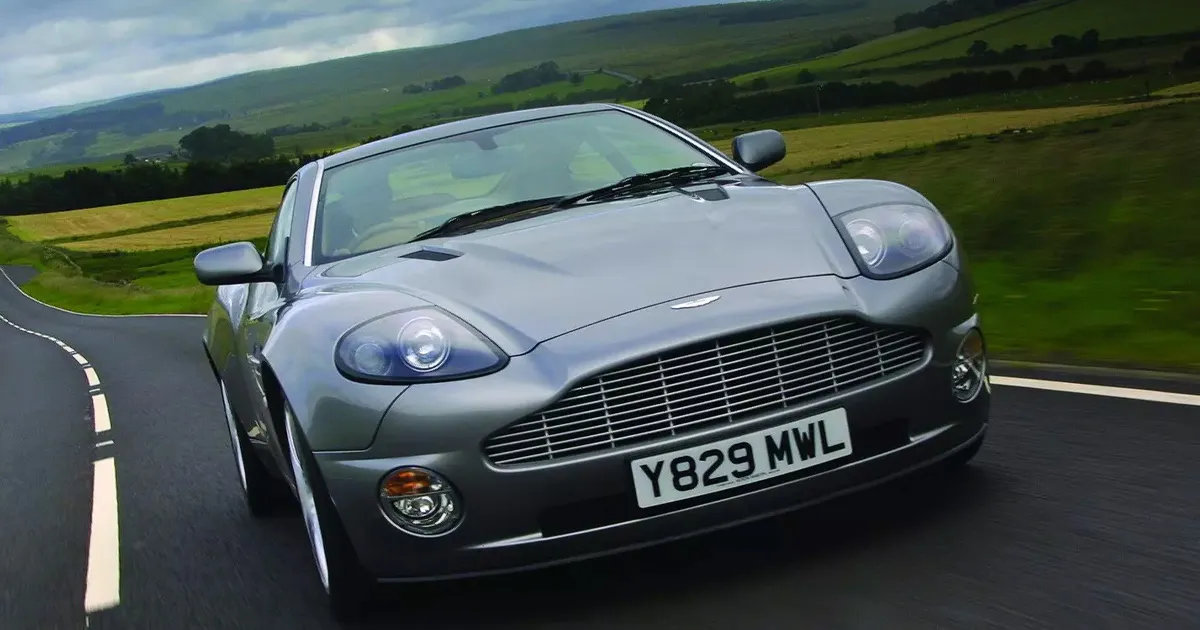
Image: astonmartin.com
V12 Vanquish
Introduced at the 2001 Geneva Motor Show, the V12 Vanquish was an ultra-luxe high-performance grand tourer that ushered in a new era for Aston Martin. Pure, precise and super light, the Vanquish was made from an advanced carbon fibre and alloy structure and featured a brutal V12 engine. A sensational car that is remembered for its appearance (and disappearance…) in the 007 film Die Another Day.
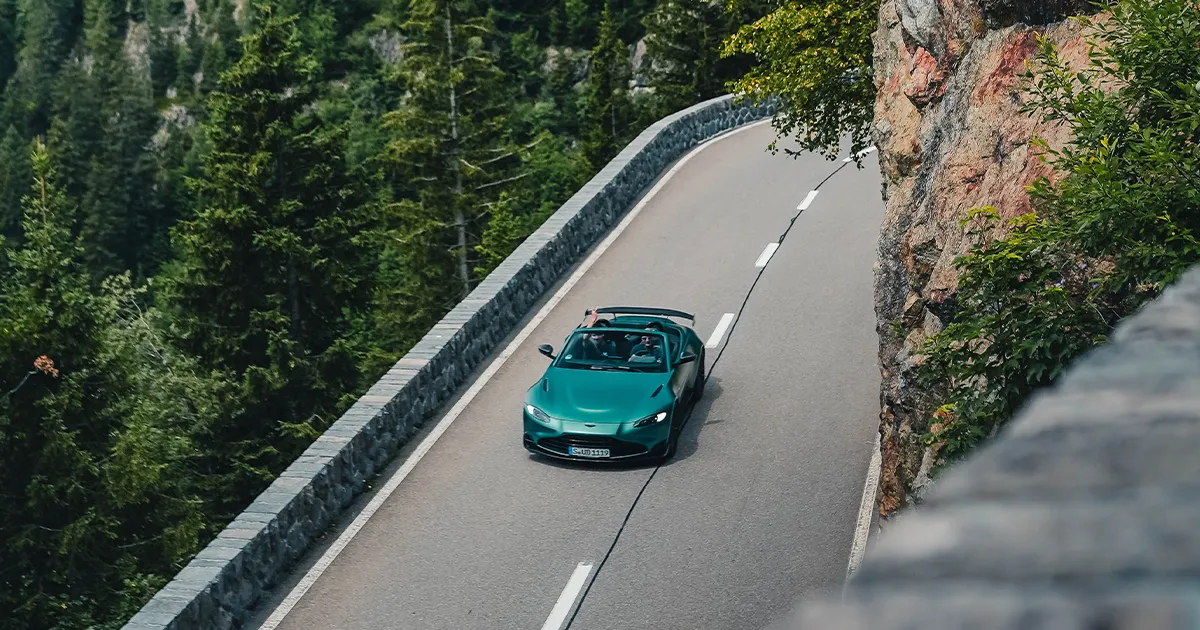
Image: Ultimate Driving Tours
Vantage F1 Roadster
Now part of our own stunning fleet, the Vantage F1 Roadster is an extreme iteration of the world-famous Vantage and a celebration of the marque’s re-entry into Formula 1 – and what a stellar job it does. It features a 4-litre twin-turbo V8 engine, new 21" wheels and race-inspired graphics. And the razor-sharp handling along with aerodynamic enhancements make it an absolute pleasure to drive, whether around the track or carving up a gorgeous mountain pass.
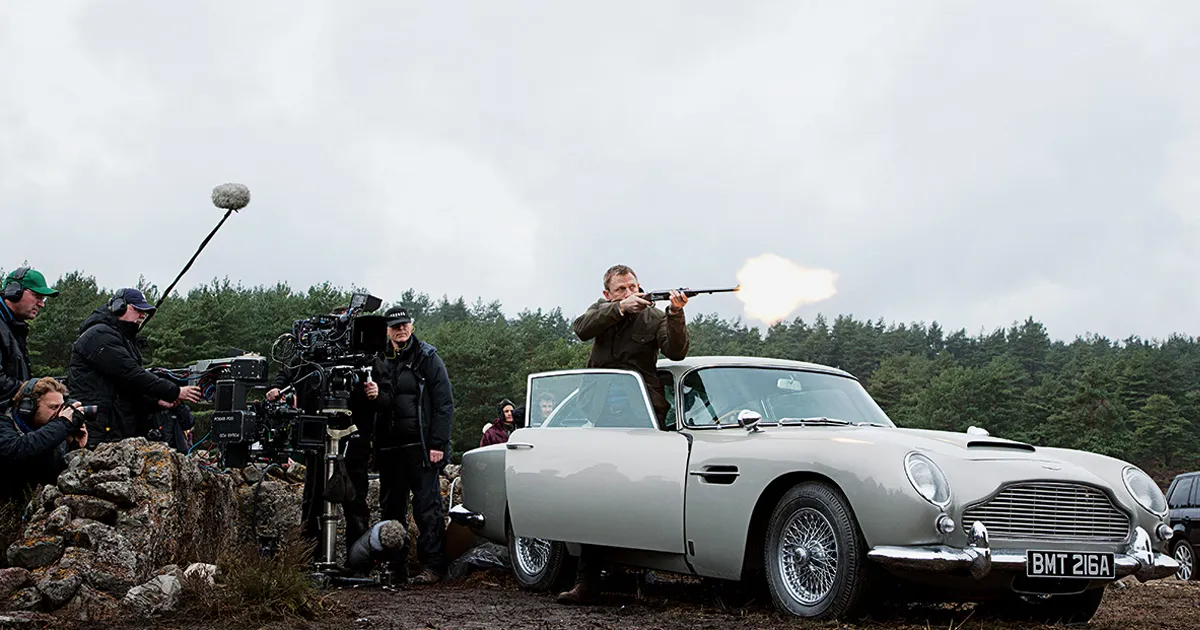
Image: astonmartin.blob.core.windows.net
Aston Martin and James Bond history
Why is Aston Martin associated with James Bond? The answer is that the marque has featured heavily in 007 books and films over the past 60 years, ensuring Aston Martin is now synonymous with the suave secret agent.
Despite the fame of the films, Aston Martin’s James Bond history actually begins in the original Ian Fleming novels. In 1959’s Goldfinger book, Bond drives an Aston Martin DB Mark III. Of course, for the film adaptation five years later, 007 drives along the breathtaking Furka Pass in the updated DB5 – replete with gadgets and armaments – sealing the marque’s place in pop-culture history.
While it will always be associated with Goldfinger, the DB5 went on to feature in seven other 007 films, including Thunderball, GoldenEye, Tomorrow Never Dies, Casino Royale, Skyfall, Spectre, and No Time to Die. That’s more Bond film appearances than Pierce Brosnan, Timothy Dalton and George Lazenby combined!
George Lazenby’s sole appearance as Bond saw him drive the Aston Martin DBS in 1969’s On Her Majesty’s Secret Service. After this, the Roger Moore era began, which spelled a temporary end to Aston Martin’s 007 appearances, in an attempt to differentiate Moore and Connery.
Yet by 1987’s The Living Daylights, Bond was back in an Aston Martin. Timothy Dalton drove a V8 (with a few ‘optional extras’) through the mountains while being chased by the KGB and local police force.
Aston Martin cars were prominent during both Pierce Brosnan and Daniel Craig’s time as 007, including the famous V12 Vanquish in 2002’s Die Another Day, which featured guns, an ejector seat, and adaptive camouflage that could render the car entirely invisible at the flick of a switch. Nifty.
Daniel Craig drove an Aston Martin DBS in Casino Royale (2006) and Quantum of Solace (2008), and the DB10 in 2015’s Spectre – the bespoke grand tourer was specially developed for the film.
In the latest 007 film, No Time to Die (2021), four Aston Martin cars were featured at various points, including the DB5, Vantage, Valhalla, and DBS Superleggera, which was driven by the new 00 agent, Nomi.
Whatever the future holds for Bond, one thing is for certain – Aston Martin will return.
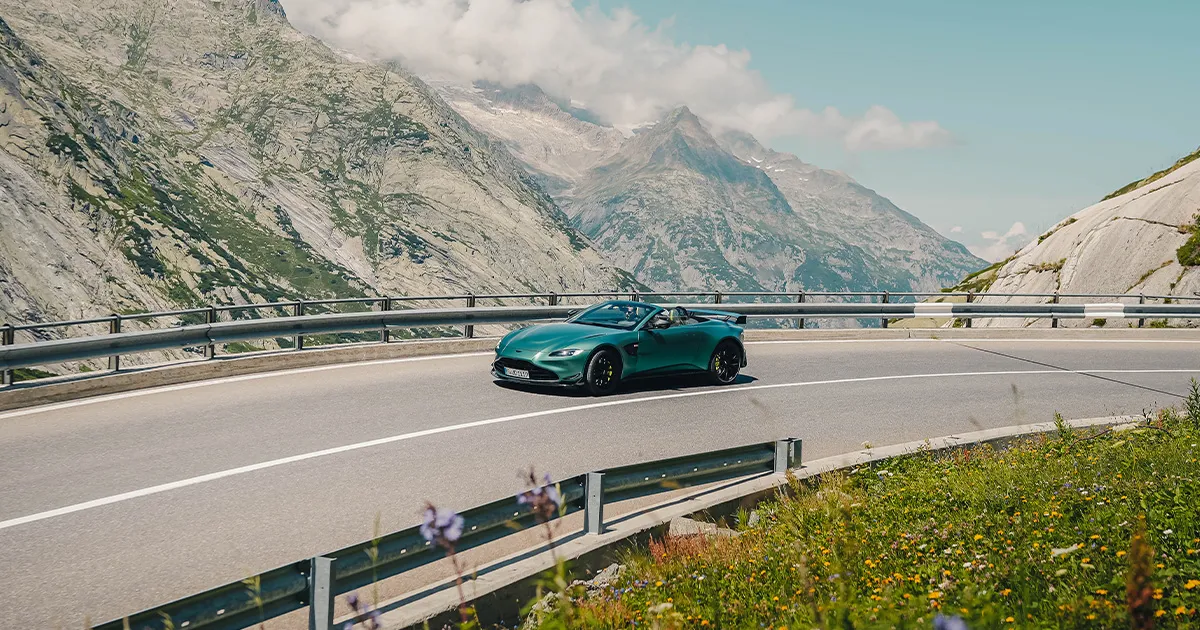
Image: Ultimate Driving Tours
Want to know what it feels like to drive an Aston Martin? Join us for a supercar tour beyond compare
While we can’t promise rockets, lasers or invisibility, we can provide you with the opportunity to cruise along some of the world’s finest driving roads in a sublime Aston Martin.
Our fleet includes the stunning Aston Martin Vantage F1 Roadster, and you can enjoy ample time driving this exceptional car – along with a range of other latest-release supercars – on one of our bucket-list driving tours.
Intrigued? You can learn more by chatting with our friendly team – reach out today.
Share Article
